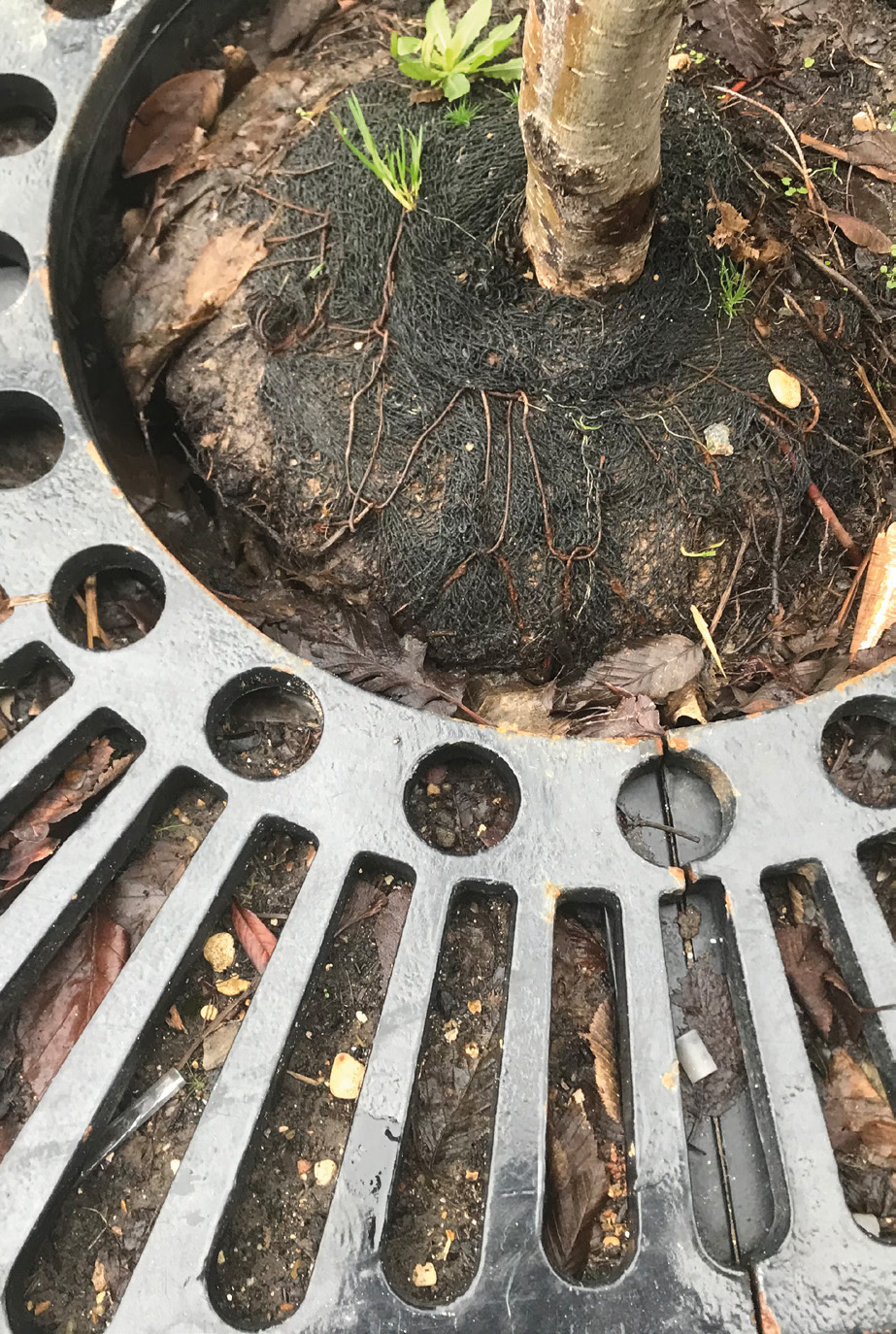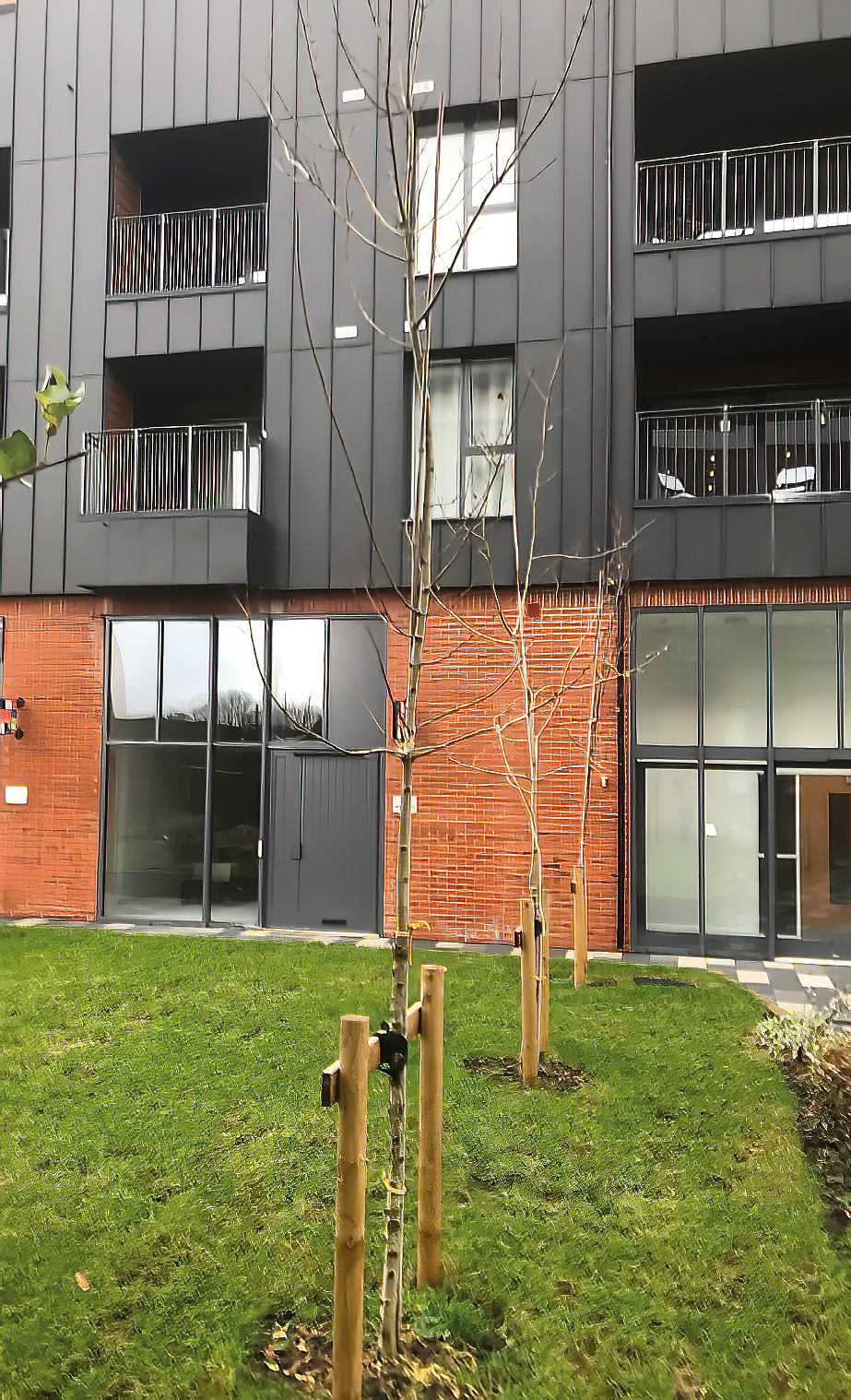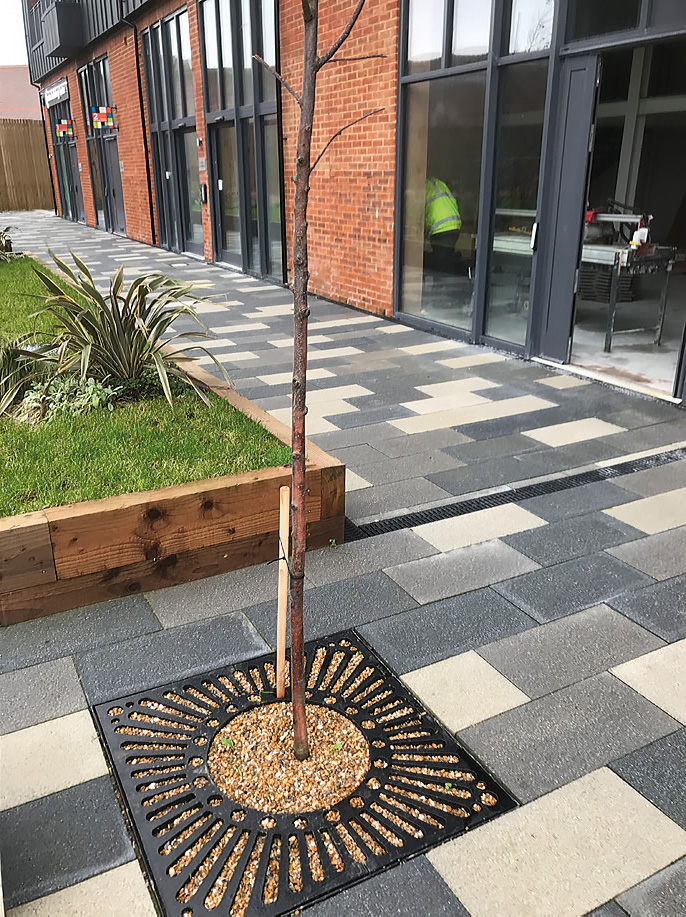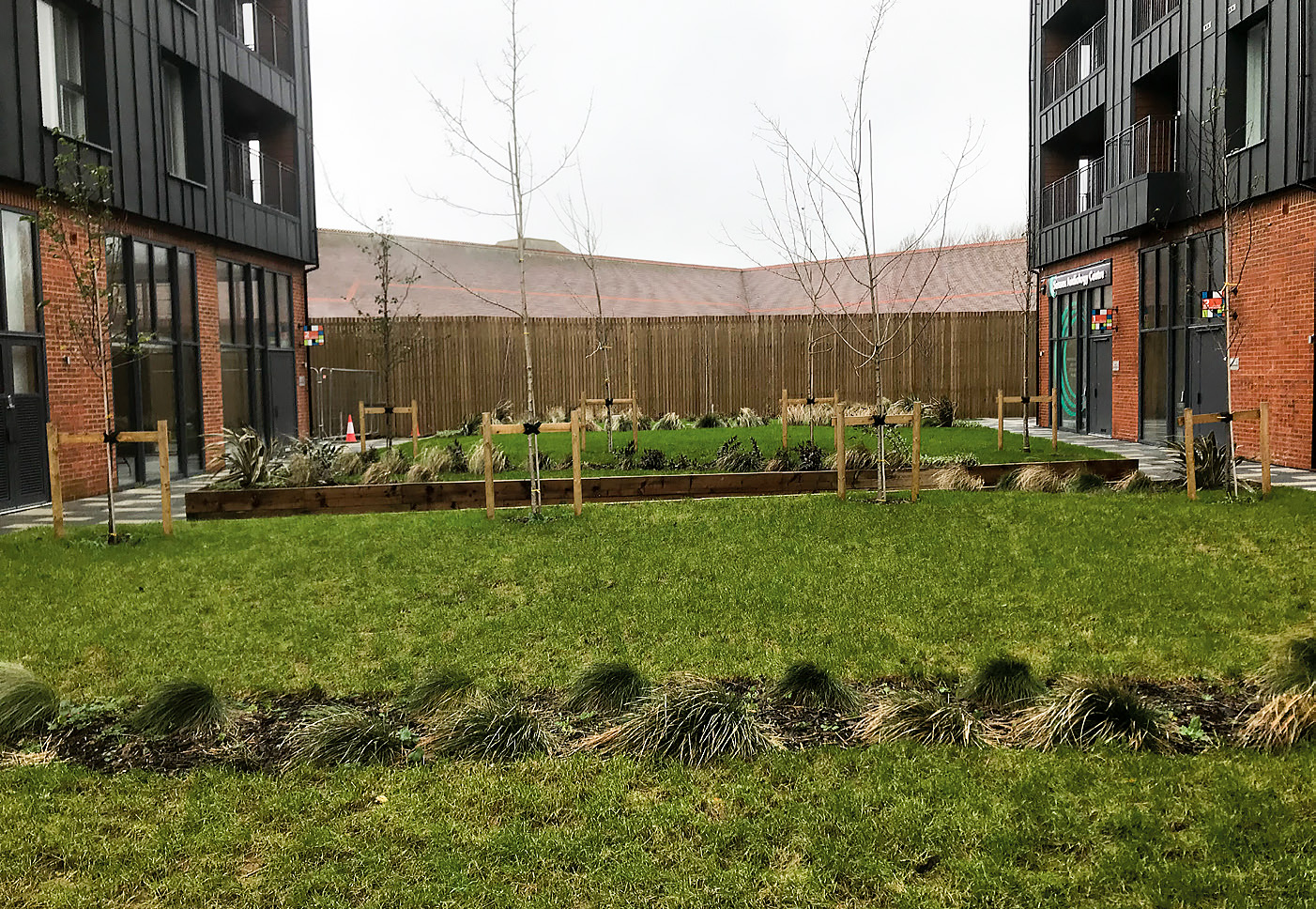Keith Sacre

Exposed made-up root ball and poor graft union.

Lack of mulch, grass competition, poor head pruning.

Supplementary staking? Elaborate hard landscape but dead tree.

Tokenistic landscaping and tree planting.
It is well over 10 years since I wrote my first piece for the ARB Magazine. During that time, I have rattled on about many things, but a constant theme has been poor-quality tree planting. As dotage approaches, it is frustrating and frankly annoying to still come across so-called landscaping schemes such as the one featured in the accompanying photographs where tree planting is at best tokenistic.
If I were looking for a case study where everything that could be done wrong had been, then this scheme in East Sussex would certainly be a strong candidate. Poor-quality nursery stock, poor planting, non-existent maintenance and inevitable decline and death – and the trees have only been in the ground for one growing season at most.
It would be easy to examine the planting in detail and once again reel off the things that have been done badly. The list will be familiar: inappropriate species choice, lack of head pruning of nursery stock, made-up root balls from the nursery, imported trees, planting too deep, inappropriate staking and underground support, failure to mulch where appropriate and so on and so forth. But what would be the point? Surely the discussion around these failures and others has been well rehearsed and the factors are known within our industry. BS 8545: Tree: From Nursery to Independence in the Landscape was published in 2014 and it addresses all the factors apparent in the landscaping scheme referred to above. It was not a perfect document and is probably in need of updating now, but the main points were covered, and best practice recommended.
Wealth of research
The wealth of research carried out over the same period has been enormous, with many high-quality publications covering best practice. The Trees and Design Action Group (TDAG) has been vociferous on the subject of tree planting and species selection, and its Trees in the Townscape and Trees in the Hard Landscapes remain high-quality references which are freely available on the TDAG website. The species selection guide prepared on behalf of TDAG by Dr Andrew Hirons and Dr Henrik Sjöman is also freely available and is also one of the best of its kind.
The Arboricultural Association has published much guidance over the years; the London Tree Officers Association has also published and continues to produce material. There have been many books written on the subject of tree planting. As I scan my own bookshelves, I quickly note erudite works by Bradshaw, Johnston, Gilman, Watson, Roloff, Hirons, James, Sjöman and many others where the subject of tree production and tree planting is discussed and best practice is considered, with recommendations made.
I have lost count of the number of conferences and seminars I have attended over the years both as a speaker and a delegate and, in the case of the Barcham seminar series and Big Barn Conference, as organiser. These have been in the UK, USA, Australia, Russia and across mainland Europe and I am speaking at another in Turin in February. The subject of tree production and planting is again a constant. It would take a month to list the number of research papers I have read on the subject from researchers across the world. At Barcham we have produced a series of manuals offering simple guidance on tree selection and tree planting which are freely available on the Barcham Pro website.
YET, with all this information there are still repeated calls for yet more research. While fresh and useful research is always to be applauded, the question must be asked, what is to be gained if the existing research is not implemented on the ground?
Why is knowledge not being converted into practice?
During the writing of BS 8545 there were many discussions. At one of them Tony Kirkham commented, ‘It is really easy to photograph badly planted trees but really difficult to photograph well-planted and well-maintained young trees.’
Mark Johnston, in Trees in Towns II published in 2008, some 15 years ago, highlighted the fact that over 25% of newly planted trees fail. Judging by the landscape scheme highlighted photographically and referred to in the opening paragraphs of this piece, even this pessimistic fact is actually optimistic.
So round and round in the circle game.
At a time when investment in tree planting has never been greater, when government at both central and local levels is actively supporting and – dare I say it – funding tree planting, when the benefits of trees are being extolled at all levels, when strategic tree planting strategies are being recommended, when research is constantly showing that the known benefits which trees provide are underestimated, it is constantly overlooked, in my opinion, that none of the benefits will be delivered unless the trees planted not only survive but grow and thrive. If they don’t then it will all have been a waste of time.
The list of reasons for poor practice is as well known and well publicised as the examples of poor practice listed above. It includes a lack of resources, poor specifications, poor tree knowledge, unskilled planting crews, poor nursery stock, lack of training and, once again, so on and so forth.
The one element which is never discussed is CARE. A plethora of research, written material and best practice guidance concerning tree production, tree planting and young tree maintenance is already in the public domain. There seems to be little excuse for doing it badly yet badly it is still done. Obviously, there are many examples of best practice in the landscape but in my view the East Sussex case study remains nearer the norm and begs the question, who cares?
TDAG has tried to encapsulate the problem in a simple phrase: there is a performance gap. Why is so little of the research and best practice guidance not converted into practice on the ground and what is the point of more research when the extensive knowledge we already have is not used?
In the East Sussex area where the landscaping scheme illustrated occurred, a community group plants trees each year. They are all volunteers, their planting is meticulous, their aftercare is exemplary, their success rate is 100%. The difference is that they care and have an investment in success. I think our industry has to have a look in the mirror and ask the question of itself. At this moment in time, we are in the position of the television manufacturer who offers the customer a choice of 100 televisions all of which meet the customer’s requirements but who introduces the caveat that ‘You can have any one that you want but I have to warn you that at least 25% of them will not work.’
I would welcome views and thoughts on the above and can be contacted at keith@barchamtrees.co.uk
Keith Sacre is Arboriculture & Urban Forestry Director for Barcham Trees. He spent many years in local government as a nursery, parks and operations manager.
This article was taken from Issue 200 Spring 2023 of the ARB Magazine, which is available to view free to members by simply logging in to the website and viewing your profile area.